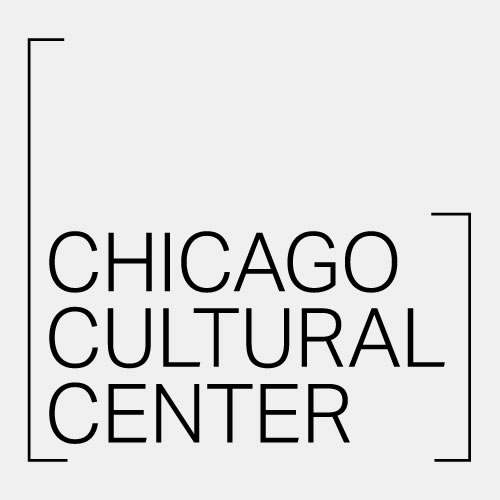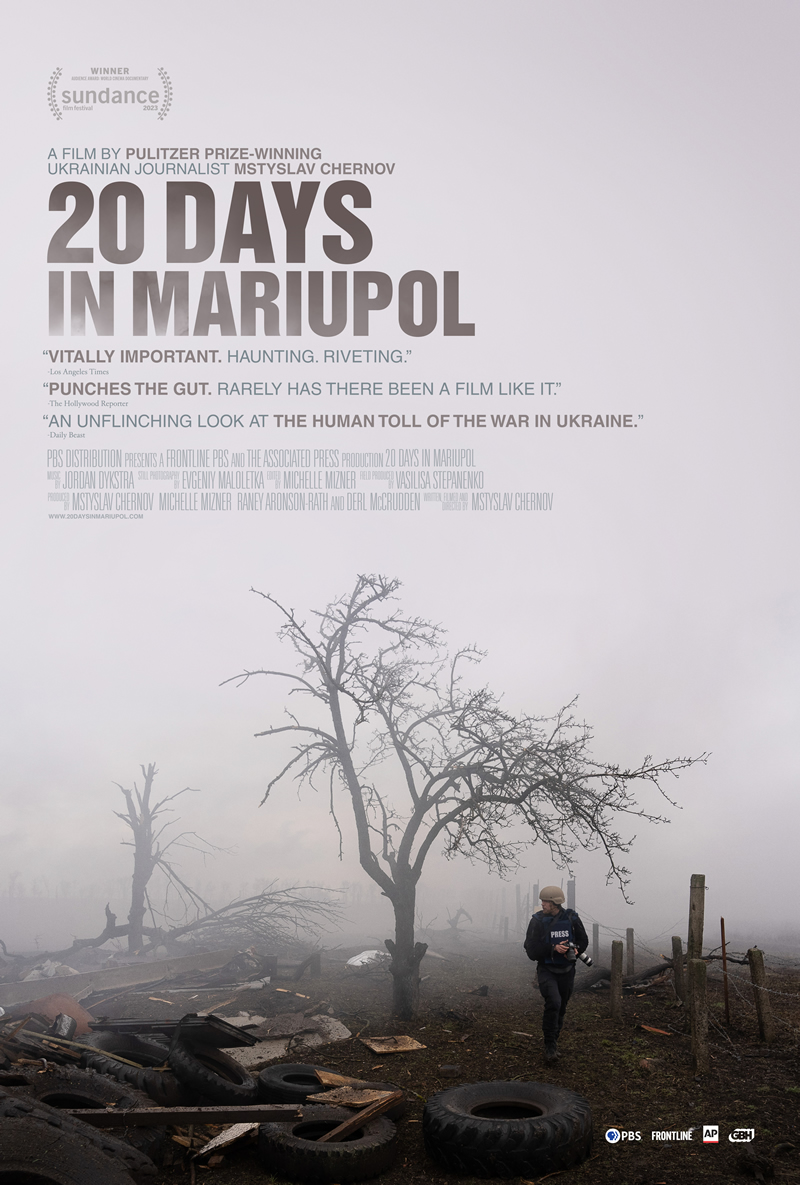Women at War: 12 Ukrainian Artists
Yevgenia Belorusets | Oksana Chepelyk | Olia Fedorova | Alena Grom | Zhanna Kadyrova | Alevtina Kakhidze | Dana Kavelina | Lesia Khomenko | Vlada Ralko | Anna Scherbyna | Kateryna Yermolaeva | Alla Horska (1929–70) | curated by Monika Fabijanska
August 17—December 8, 2024
Chicago Cultural Center, Michigan Avenue Galleries, 1st Floor East
Chicago Cultural Center > Visual Art Program > Exhibitions > Past Exhibitions > Women at War
Women at War features works by a selection of the leading contemporary women artists working in Ukraine, and provides context for the current war, as represented in art across media. Several works in the exhibition were made immediately following February 24, 2022, when Russia began the full-scale invasion of Ukraine; others date from the ten years of war following the annexation of Crimea and the creation of separatist Donetsk and Luhansk “People's Republics” in Donbas in 2014.
War is central to history. History has been written (and painted) by men. This exhibition provides a platform for women narrators of history and also examines gendered perspectives of war. Women are generally absent from the historical accounts of war, but violating a woman is seen as a violation of land and nation. Media images reinforce the perception of gender divide. But is war indeed gendered? Women comprise c. 25% of the Ukrainian armed forces. Russian soldiers rape Ukrainian civilians of all and no genders, including adult men. Yet, the majority’s experience remains tied to the traditional gender roles. Many artists in this exhibition struggle with the notion of victimhood and pose the question in what way women have agency during war.
The exhibition also offers an insight into Ukrainian and other Eastern European feminisms, which are significantly different from the Western mold. It contributes to the discourse about how national identity is tied to the perception of women’s role in society. There are parallels between the fight for Ukraine’s independence and the fight for the equality of Ukrainian women. They stem from the paradoxes of the Soviet Union, where early modernist, anti-nationalist, and feminist promises became but a fig leaf of propaganda for the increasingly brutal and misogynist patriarchal regime.
An independent Ukraine, burdened with its colonial past, the unimaginable wounds of the 20th century (the Holodomor, two world wars, and the Holocaust), and the actuality of a crisis, became obsessed with history. Ukrainian art of the 2010s was largely focused on the discussion of whether national identity should draw directly upon the short period of pre-Soviet independence or include the legacy of the Ukrainian SSR. The new generation of artists turned their attention to historiography – how history is written, who writes it, who and what remains invisible. Soviet painting, especially the interpretations of WWII, came into focus for many. Others organized around the critique of decommunization – the destruction of Soviet monuments and mosaics in Donbas spearheaded by the post-Maidan government – and turned towards the blanked-out pages of history.
The recordings of four conversations with the exhibition artists moderated by the curator are available online at Fridman Gallery and YouTube
The exhibition, curated by Monika Fabijanska, was listed among ten best art exhibitions of 2022 by both The Washington Post and Frieze.
Chicago-based critic Susan Snodgrass published an interview with Monika Fabijanska on Women at War in ARTMargins (October 2023).

Admission is FREE
Open Daily, 10 a.m.–5 p.m.
Exhibitions close 15 minutes before the building closes
(Closed Holidays)
Find us:
Chicago Cultural Center
78 E. Washington St.
Chicago, IL 60602

Take CTA to Chicago Cultural Center
- From the elevated lines: exit at Washington/Wabash and walk east.
- From the subway: exit at Lake (Red Line) or Washington (Blue Line) and walk east.
- Served by Michigan Avenue buses 3, 4, 19, 20, 26, 60, 66, 124, 143, 147, 151, 157 and Washington St. buses 4, J14, 20, 56, 66, 147
 1 p.m.
1 p.m.
9'31" performance by Maria Plotnikova
Michigan Avenue Galleries, 1st Floor East
Maria Plotnikova (born in Zhytomyr; raised in Mariupol) is a Ukrainian artist specializing in performance and painting. She received the Chevening Scholarship in 2015 to study Arts at Oxford Brookes University. In 2017, she won first prize in Ukraine’s biennale "Tomorrow that never came" and held a solo exhibition at Izolyatsia. After completing her MFA at the School of the Art Institute of Chicago as a Fulbright Scholar in 2021, Maria co-curated the "Proximity" festival in Chicago and was a resident at the Institut für Alles Mögliche in Berlin. With the onset of the Russia-Ukraine war, Maria relocated to the CeRCCa residency in Catalonia. Initially paralyzed by the events in her country, she created the "Cuts" project to express the collective and individual trauma experienced by Ukrainians. This project dissects the overwhelming pain into comprehensible parts, the personal and collective impact of war. In 2023 Maria was invited to perform in Oude Kerk, Amsterdam and in Villa Stuck, Munich. The same year she was invited to Kai center research residency in Tallinn, Estonia. In collaboration with choreographer Sokulska, Maria's piece “Territory and people” was part of the La Merce 2023 festival in Barcelona. Maria currently lives and works in Chicago.
 About the performance:
About the performance:
This piece is a trigger warning that lasts for 10 minutes. Created and first performed in 2021, it explores a connection so taxing and heavy that it becomes almost unbearable. Traumatized and retraumatized endlessly—both individually and collectively—we desperately try to share our pain with others, hoping it will lighten the load. And, for a fleeting moment, it does. But then comes the realization: it was just the illusion of control.
In 2022, I watched, along with the rest of the world, as Mariupol was obliterated by Russian shells, missiles, and tanks. Now, the city I grew up in is occupied and being repopulated by new inhabitants. Many of the locals I remember—were either killed, forcibly russified, or displaced. I see my parents trying to build a new life in an unfamiliar place. I see my mom, afraid to touch this wound with words.
So let’s scream.
1:30 p.m.
Screening of Dana Kavelina’s short films: Mark Tulip, who spoke with flowers (2018), Letter to a Turtledove (2020), and Monuments (2022)
Claudia Cassidy Theater, 2nd Floor North
1-3 p.m.
Dispatches from Ukraine: 20 Days In Mariupol & Letter to a Turtledove
Claudia Cassidy Theater, 2nd Floor North
Short: Letter to a Turtledove | 2020 | 21min | dir. Dana Kavelina | Ukrainian with English subtitles
Screening copy courtesy of the filmmaker
Feature: 20 Days in Mariupol | 2023 | 94min | dir. Mstyslav Chernov | English, Ukrainian & Russian with English subtitles
Screening copy courtesy of PBS Distribution, in partnership with WTTW
 Join us at the Claudia Cassidy Theater for a free film program showcasing work from Ukrainian filmmakers reflecting on the ongoing war in their home country through immediate and gripping journalism and art. 20 Days In Mariupol (2023), last year’s winner of the Academy Award for Best Documentary Feature, details the work of a group of Ukrainian journalists trapped in the besieged city of Mariupol during the Russian invasion. The film draws on director Mstyslav Chernov’s daily news dispatches and personal footage of his own country at war. It offers a vivid, harrowing account of civilians caught in the siege, as well as a window into what it’s like to report from a conflict zone, and the impact of such journalism around the globe.
Join us at the Claudia Cassidy Theater for a free film program showcasing work from Ukrainian filmmakers reflecting on the ongoing war in their home country through immediate and gripping journalism and art. 20 Days In Mariupol (2023), last year’s winner of the Academy Award for Best Documentary Feature, details the work of a group of Ukrainian journalists trapped in the besieged city of Mariupol during the Russian invasion. The film draws on director Mstyslav Chernov’s daily news dispatches and personal footage of his own country at war. It offers a vivid, harrowing account of civilians caught in the siege, as well as a window into what it’s like to report from a conflict zone, and the impact of such journalism around the globe.
The feature will be preceded by Letter to a Turtledove (2020), an experimental short film-poem directed by Ukrainian multimedia artist Dana Kavelina. It comprises fragments of archival footage of Donbas since the peak of Stalinist industrialization in the 1930s until the 1990s, amateur footage shot during the current war, and animated and staged film segments. In Kavelina’s words, the Letter… invites us to “think of a victim as having certain subjective agency who is not involved in the reproduction of violence yet absorbs it. This is her strength.”
After the film program, we invite you to the Michigan Avenue Galleries to explore our current exhibit Women At War: 12 Ukrainian Artists. Women at War features works by a selection of the leading contemporary women artists working in Ukraine (including Letter to a Turtledove director Kavelina), and provides context for the current war, as represented in art across media.
12-1 p.m.
Expert-Led Tour with Magdalena Moskalewicz, Ph.D.
Michigan Avenue Galleries, 1st Floor East
Join us on Wednesday, November 13, 2024, for a special guided tour of the "Women at War" exhibition with renowned art historian, curator, and author, Magdalena Moskalewicz, Ph.D.
Magdalena Moskalewicz will lead you through the exhibition, providing an enriched understanding of the art and its historical context. Her expertise will illuminate the stories of resilience, strength, and defiance that define the experiences of Ukrainian women during times of conflict, offering a nuanced perspective on the artwork and the themes explored in the exhibition.
1 p.m. & 3 p.m.
Curator-Led Tour
Michigan Avenue Galleries, 1st Floor East
Join us on Saturday, October 19, 2024, for an insightful journey through the "Women at War" exhibition with curator Monika Fabijanska. These exclusive tours offer a deeper understanding of the powerful stories and artistic expressions that highlight the often-overlooked experiences of women in wartime.
Each tour will provide an intimate look at the artworks, offering unique insights into the creative process and the historical contexts that shaped these powerful pieces. Monika Fabijanska will guide you through the exhibition, sharing her curatorial vision and the narratives that connect the works on display.
Whether you're an art enthusiast or simply curious to learn more about the intersection of art and history, these tours promise to enrich your understanding of the pivotal roles women have played in shaping the world through their resilience and strength.
Join us for a captivating evening exploring the “Women at War” exhibition on Friday, October 18, 2024. Immerse yourself in the compelling narratives and evocative artworks that highlight the experiences of women during times of conflict.
5:30 p.m.
Guided Tour with Curator Monika Fabijanska
Michigan Avenue Galleries, 1st Floor East
Explore the exhibition through the expert eyes of curator Monika Fabijanska. Discover the intricate stories and powerful visuals that bring to life the experiences of Ukrainian women in wartime, as Monika shares her vision and the story behind each piece.
6:30-8 p.m.
Exclusive Interview: Monika Fabijanska with Critic Susan Snodgrass
Millennium Park Room, 5th Floor South
Engage in a thought-provoking conversation between the exhibition curator Monika Fabijanska and renowned Chicago-based art critic Susan Snodgrass. Delve deeper into the themes of the exhibition, discuss the impact of art in documenting history, the potential of feminist historiography, the realities of life under war in Ukraine, and gain unique insights into the creative process behind “Women at War.”
Don’t miss this unique opportunity to connect with fellow art enthusiasts, gain a deeper understanding of the pivotal roles women have played in shaping history, and celebrate the power of art to convey profound stories.
We look forward to welcoming you to an evening of discovery, dialogue, and artistic excellence.
Monika Fabijanska is a New York-based independent art historian and curator. Prior to the touring exhibition Women at War (2022), she curated Betsy Damon. Passages: Rites and Rituals (La MaMa Galleria) listed among The New York Times best shows of 2021, ecofeminism(s) (Thomas Erben Gallery, 2020), and groundbreaking The Un-Heroic Act: Representations of Rape in Contemporary Women's Art in the U.S. (John Jay College CUNY) listed among Hyperallergic’s best art shows of 2018. Fabijanska initiated the idea and provided curatorial consulting for The Museum of Modern Art’s retrospective exhibition of the sculptor Alina Szapocznikow (2012). She is currently working on a transnational museum exhibition, supported with a 2023 Curatorial Research Fellowship of The Andy Warhol Foundation for the Visual Arts, co-writing a book about performance and ecofeminist artist Betsy Damon, and teaches Curatorial Practice at the New York University. monikafabijanska.com
Susan Snodgrass is a Chicago-based critic and editor who writes about contemporary art, material art practices, public art, spatial politics, and the built environment. She is a member of the Editorial Collective of ARTMargins Online, devoted to contemporary art in East-Central Europe and other global margins and for whom she is also Senior Editor for Special Projects. She is the author of the book Inside the Matrix: The Radical Designs of Ken Isaacs (Half Letter Press, 2019), and her articles have appeared in Artforum, Art in America, Textile: Cloth and Culture, among others. She is a 2018 recipient of a Creative Capital/Andy Warhol Foundation Arts Writers Grant for her blog, In/Site: Reflections on the Art of Place, which explores art, architecture, and urbanism, and a finalist for the 2019 Dorothea and Leo Rabkin Foundation Arts Journalist Award.









